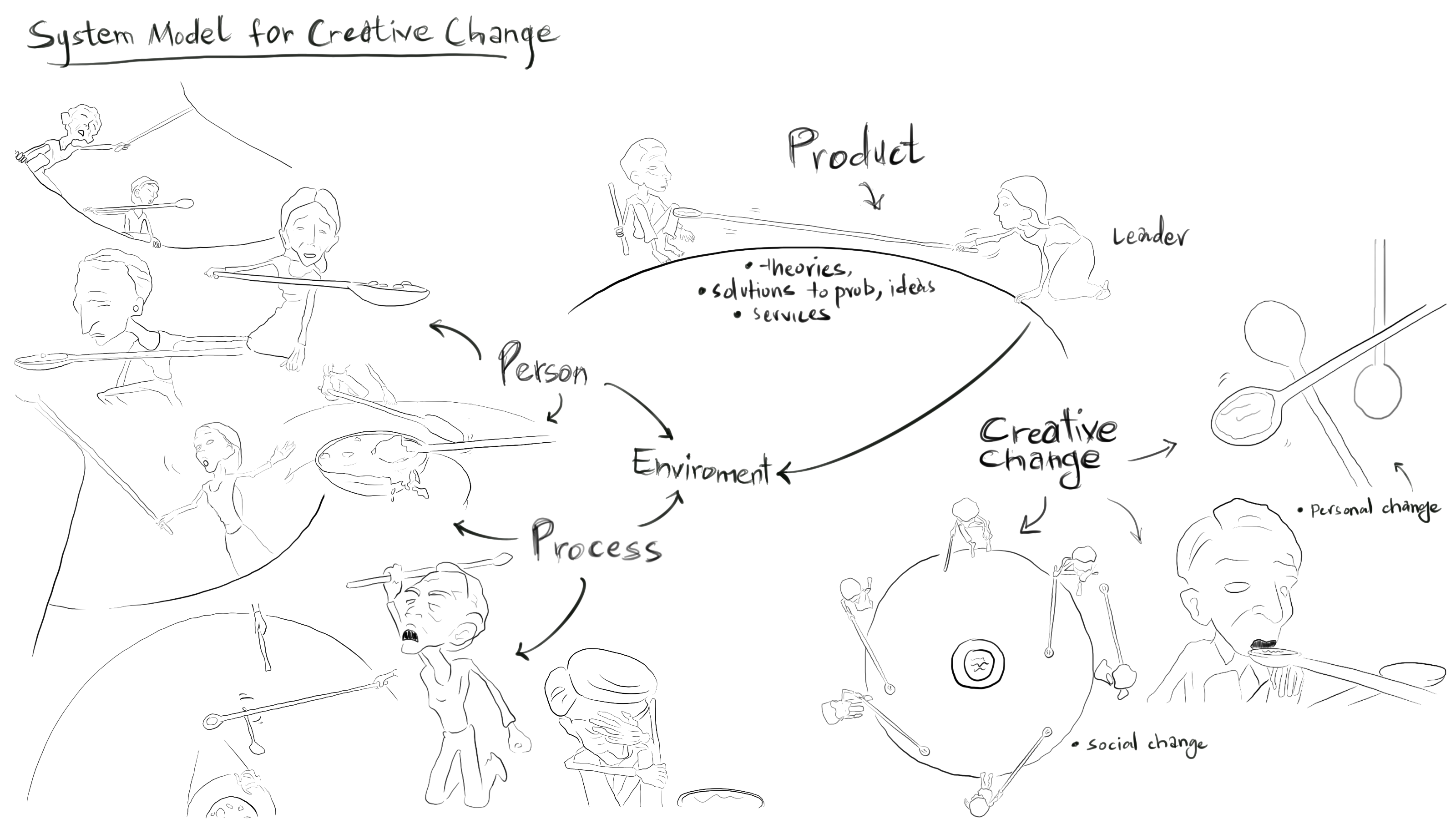Creative leadership
Introduction
The video showcases a compelling campaign by Caritas Internationalis, a charitable organization committed to eradicating global hunger. It portrays a community grappling with a severe hunger crisis and the emergence of a leader from within who employs creativity to address the issue, inspiring collective effort towards a unified goal.
Analysis of the System Model for Creative Change
Person and Process
Person: The individuals in the community, who are facing starvation, embody the first key element. The hunger crisis leads to a cascade of social issues, including theft, division, misery, hoarding, and a rise in crime rates. In the face of these challenges, a leader emerges from within the community. This leader demonstrates critical traits of creative leadership such as vision, innovation, empathy, and resilience.
Process: The process of creative leadership is illustrated through the leader’s innovative approach to solving the hunger problem. By leveraging the available resources and inspiring others to act, the leader initiates a series of actions that address both the immediate needs and the underlying issues. This process involves recognizing the potential of existing resources, such as food and other reachable supplies, and mobilizing the community to use them effectively.
Impact on the Environment
The hunger crisis and the resulting social issues create a challenging environment. Frustration and selfish behavior lead to the hoarding of resources and increased crime rates. The community’s weaker members, who lack the strength and stability to secure their needs, are particularly vulnerable. This environment of scarcity and conflict necessitates creative leadership to foster cooperation and resourcefulness.
Key Elements of Creative Leadership in the Video
The video emphasizes several critical aspects of creative leadership:
- Vision: The leader’s ability to see beyond the immediate crisis and envision a solution that mobilizes the community.
- Innovation: The use of creative problem-solving to maximize the utility of available resources.
- Empathy: Understanding and addressing the needs of the most vulnerable members of the community.
- Resilience: The ability to adapt and persevere despite the challenges.
Transformation and Outcomes
The leader’s emergence catalyzes a transformation within the community. Initially facing a lack of support, the leader’s creativity and resilience inspire others to contribute to the solution. This leads to a chain reaction of effective resource utilization and the resolution of the hunger problem.
The video demonstrates the transformative power of creative leadership. It highlights how one individual’s approach can bring about significant positive change, not only addressing immediate needs but also fostering long-term resilience and development within the community. This transformation underscores the importance of nurturing creative leaders who can drive innovation and inspire collective action.

Relation to Education
The situation depicted in the Caritas Internationalis clip can be mirrored in various leadership contexts, including educational settings. Despite abundant resources, these assets are often mismanaged and inefficiently distributed. For example, Pakistan has the infrastructure, teachers, and potential, yet approximately 22 million children remain out of school (Soroya D. M. H. 2023, educating girls, increasing retention for greater impact, Policy note 2023). Education, unfortunately, has evolved into a business, plagued by leaders who lack empathy, integrity, and awareness.
In the classroom, teachers should prioritize character development over grades, ensuring that students are recognized for their intrinsic qualities rather than academic performance alone. An ideal educational environment would encourage students who excel in certain areas to assist their peers, promoting a collaborative and supportive atmosphere.
Instead of focusing solely on the teacher’s favourites—those who consistently excel and receive all the perks—educational leadership should address the needs of all students. This approach prevents the creation of disparities caused by external influences and avoids the wastage of resources, time, and effort. By fostering empathy, integrity, and collaboration, educational leaders can cultivate a more equitable and effective learning environment.
Conclusion
The Caritas Internationalis video is a poignant reminder of the impact of creative leadership in addressing critical social issues like hunger. By fostering innovation and adaptability, leaders can inspire collective action and drive meaningful change. The video highlights not just immediate benefits but also the enduring impact of such leadership on communities, promoting long-term resilience and development
“Transformational leaders don’t start by denying the world around them. Instead, they describe a future they’d like to create instead.” – Seth Godin


